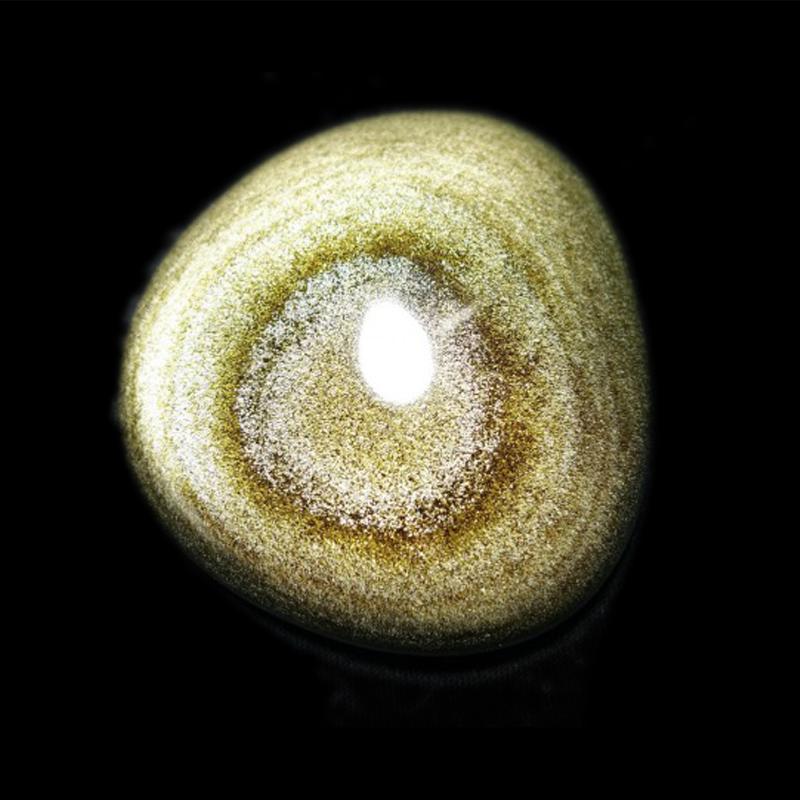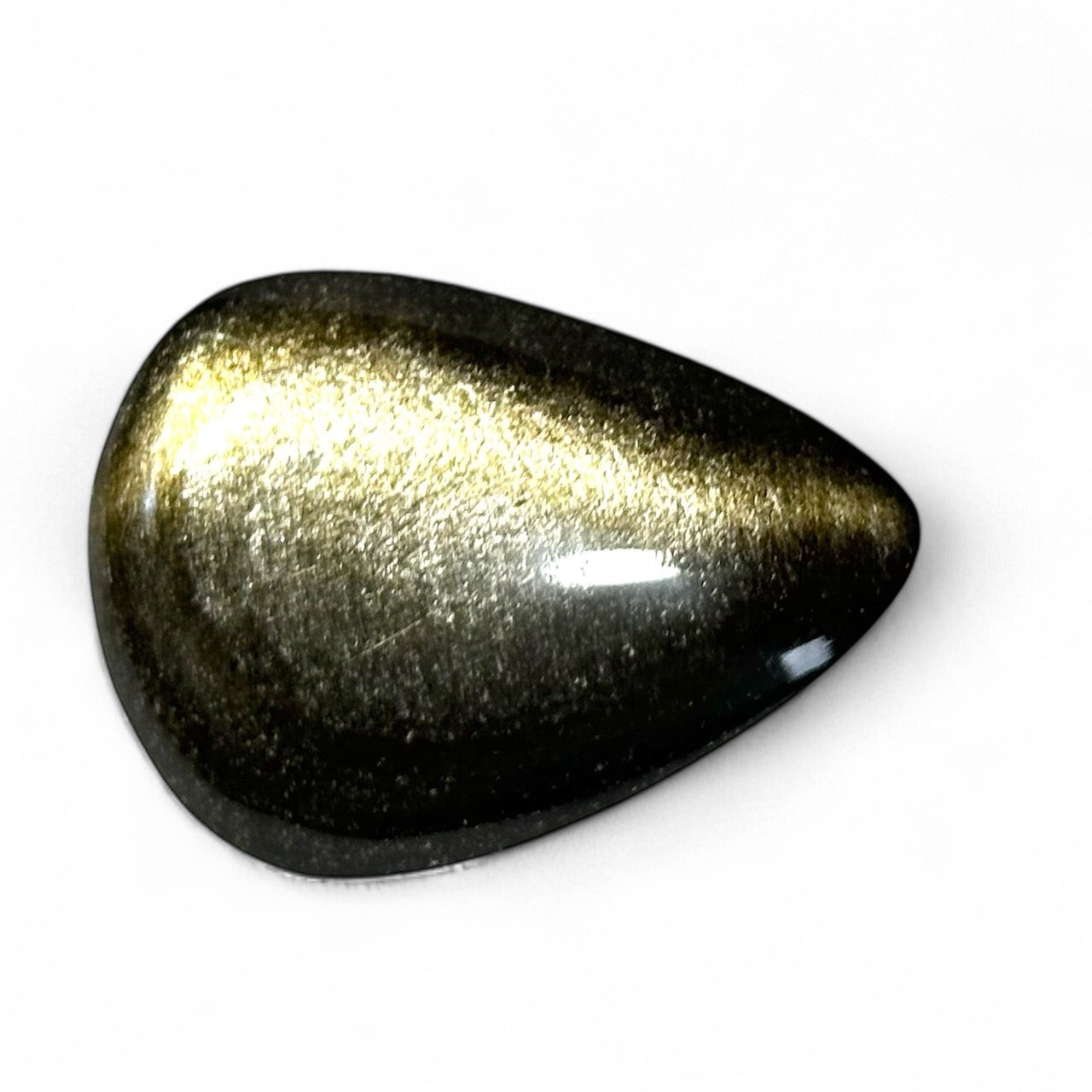Golden obsidian pebble Mexico AAA
OBSD-G-01
- Regular price
-
19,90 € - Regular price
-
19,90 € - Sale price
-
19,90 €
Couldn't load pickup availability
Learn more
OBSD-G-01
Origin: Mexico
Grade: AAA
Dimensions:
About 30-40mm
Beautiful golden obsidian pebble with a size of 30-40mm
Shapes, colors and patterns may vary from stone to stone.
Obsidian is a volcanic rock rich in silica. Different types of obsidian exist. They differ due to the chemical composition of the rock. Obsidian is actually a natural glass. It is formed during an eruption of silica-rich lava with less than 3% water. Upon exiting the volcano, it cools very quickly, freezing the crystallization process.
This can be compared to a piece of lava suddenly solidifying as it leaves the volcano. The direct consequence of this phenomenon is the inability of the rock to crystallize. The result is the creation of a volcanic glass with a uniform texture and which is called an amorphous mineral. Furthermore, obsidian has sharp edges and blades of great finesse. It is a natural mineral with a complex composition.
Thus, obsidian is essentially composed of silicon dioxide, about 70%, or more. Its fracture is conchoidal (i.e. furrowed with curved and concentric striations) and its hardness is 7 to 7.5 on the Mohs scale. It has different colors, different reflections due to the volcano where it was discovered and its various inclusions. It should be noted that each deposit, linked to a volcano, provides a different obsidian.
Green, brown, gray or black, it can sometimes have golden, silvery reflections, or even all the colors of the rainbow, (effect produced by the presence of hematites or magnesites). It also happens that two colors of obsidian mix.
Obsidian is found in some sharp objects dating back about 2 to 4 million years, especially in Kenya. During archaeological excavations, knives, arrows and spears have been discovered. Sometimes, obsidian, depending on its composition, can be polished to make rustic mirrors.
As early as 7,000 BC, obsidian was widely used in surgery because of its cutting properties. There is evidence of trepanation, the removal of part of the skull bone either to clean a wound or to allow spirits to enter.
In Mesopotamia, traces of obsidian blades have been identified as early as 5,000 BC.
In Egypt, obsidian was brought back from the Red Sea, Greece or Italy. The Egyptians used it for its beauty, mystery and value. They made the eyes of their statues, notably those in the mask of Tutankhamun (1323 BC). Obsius, returning from Ethiopia, brought back obsidian and decided to give them their name, obsidianus in Latin. Obsidian was used for the manufacture of all kinds of ornamental objects, jewelry or tools.
However, in Mexico, there is another legend. At a time when the natives were short of food, the men went hunting where they had to face wild beasts, even mammoths. They left their wives and children under the protection of the elders. Then, one day, the tribe was attacked by wild and ferocious hyenas. But the elders no longer had any weapons when young Obsid, son of the most valiant of warriors, saw a shiny black stone on the ground. He tied it securely to a piece of wood. He threw this makeshift weapon at one of the hyenas, which howled in pain, causing all the others to flee. The entire tribe honored young Obsid and granted him the status of warrior and the stone was thus named in his name.
In the Navajo tribe, obsidian was one of the 4 sacred stones. The mountain of obsidian corresponds to Mount Hesperus. In some stories of their creation, the heart of man is said to have been created by the gods with obsidian.
For generations, mages, sorcerers and prophets have used polished obsidian as a mirror. They claimed to be able to read the future in it. But it was Dr. John Dee (1527 - 1608) who used it again to spread his prophecies. It became very famous and the story goes that it helped to foil certain plots against the English crown.
The main obsidian deposits are located in Mexico, Madagascar, the United States, etc.
This variety of obsidian is black with golden reflections or glitter. Its appearance is shiny and its reflections stand out particularly in the sun. This stone, mounted on a jewel, is of incredible beauty.
During archaeological excavations, statuettes of Emperor Augustus (63 BC / 14 AD) were created for him, the first Roman emperor. This stone has also been found in India, Italy and on the ocean coasts of Spain.
Golden obsidian is, like all obsidians, a natural volcanic glass from lava that has undergone rapid cooling. It contains more than 75% silica and layers of micro-inclusions of gas at the origin of its golden reflections.
Golden obsidian is not a true mineral, as its chemical content is not constant and it does not form crystals. Its composition varies depending on the volcano from which it comes.
It has a conchoidal fracture, which makes it easy to break. It is not recommended for making certain jewelry, especially ankle bracelets, or even rings. Large cabochons or flat stones show off this stone particularly well.
Golden obsidian is an extrusive rock, as it formed above ground due to contact with cold air or water.



Golden obsidian pebble Mexico AAA
- Regular price
-
19,90 € - Regular price
-
19,90 € - Sale price
-
19,90 €
-
100% SECURE PAYMENT
Paypal, credit card, check, transfer
-
FREE DELIVERY
from 40€ purchase
-
SATISFIED OR REFUNDED
14 days to change your mind
-
CUSTOMER SERVICE AVAILABLE
contact@laboiteacailloux.com
to receive all our offers, good deals and new products from La Boite à Cailloux



